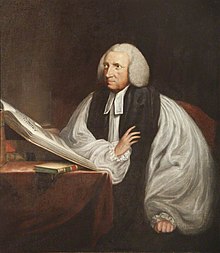I’m sure you haven’t missed that Sabina recently started a series about the early Germanic languages on this blog? The series will continue in a couple of weeks (you can read the latest post here), but as a short recap: when we talk about the modern Germanic languages, these include English (and Scots), Dutch (and Flemish), German, Icelandic, Faroese, and the mainland Scandinavian languages (Swedish, Norwegian, and Danish). These languages, of course, also have a plethora of dialectal variation under their belts1. Today, I’m gonna tell you about one particular grammatical feature that we find in only a couple of Germanic languages. You see, when it comes to the grammar of the modern Germanic languages, they’re all relatively similar, but one quirky trait sets the ones spoken on the British Isles apart from the rest: do-support.
Before we begin, I want to clarify my terminology: Do-support is a feature of syntax, which means that it’s to do with word order and agreement. The syntax concerns itself with what is grammatical in a descriptive way, not what we prefer in a prescriptive way2. So, when I say something is (un-)grammatical in this post, I mean that it is (dis-)allowed in the syntax.
So what is do-support?
Take a simple sentence like ‘I like cheese’. If a speaker of a non-English (or Scots) Germanic language were to turn that sentence into a question, it would look something like ‘Like you cheese?’, and in most Germanic varieties a (clearly deranged) person who is not fond of cheese would answer this with ‘No, I like not cheese’. In their frustration, the person who asked may shout ‘Eat not cheese then!’ at the deranged person.

But, those sentences look weird in English, both the question and the negative sentence. The weirdness does not only arise from the meaning of these sentence (who doesn’t like cheese?), but they’re, in fact, ungrammatical!
English, and most Scots dialects, require do-support in such sentences:
- Do you like cheese?
- No, I do not (or, don’t) like cheese.
- ‘Don’t eat cheese then!’
The above examples of do-support, interrogative (the question), negative declarative (the negated sentence), and negative imperative (the command) are unique to English and Scots, but there are other environments where do is used, and where we also may find it in other Germanic languages, such as:
- Tag-questions: ‘You like cheese, don’t you/do you?’
- Ellipsis: ‘I ate cheese yesterday, and Theo did (so) today’
- Emphasis: ‘I do like cheese!’
- Main verb use: ‘I did/am doing a school project on do-support
In all the examples above except for the emphasis and main verb usage, do is essentially meaningless; it doesn’t add any meaningful (semantic) information to the sentence. Therefore, we usually call it a “dummy” auxiliary, or simply dummy do.
(Auxiliary is the name for those little verbs, like do, is, and have, which come before other verbs in a sentence, such as in ‘she is eating cheese’ and ‘I have eaten cheese’)
English and Scots didn’t always have do-support, and sentences like ‘I like not cheese’ used to be completely grammatical. We start to see do-support appearing in English around the 15th century, and in the 16th century for Scots. As is the case with language change, do-support didn’t become the mandatory construction overnight; in both languages we see a period where sentences with and without do-support are used variably which lasts for centuries before do-support eventually wins out (in the 18th-19th century).
Interestingly, in this period of change we also see do-support in non-negated sentences which aren’t intended to be emphatic, looking like: ‘I do like cheese’. These constructions never fully catch on though, and the rise and fall of this affirmative declarative do has been called a “failed change”.

Why did we start using do-support, though?
Well, we aren’t exactly sure yet, but there are theories. Many scholars believe that this is a so-called language-internal development, meaning that this feature developed in English without influence from another language. This is based on that do used to be a causative verb in English (like cause, and make in ‘I made Theo eat cheese’), which became used so frequently that it started to lose its causative meaning and finally became a dummy auxiliary. This process, where a word gradually loses its meaning and gains a purely grammatical function, is called grammaticalisation.
There have also been suggestions that it was contact with Welsh that introduced do-support into English, since Welsh had a similar structure. This account is often met with scepticism, one reason being that we see very little influence from any celtic language, Welsh included, on English and Scots grammar in general. However, new evidence is regularly brought forward to argue this account, and the origin of do-support is by no means a closed chapter in historical linguistics research.
What we do know is that do-support came about in the same time period when English started to use auxiliaries more overall – you may have noticed that, in English, we’re more likely to say ‘I am running to the shop’ than ‘I run to the shop’, the latter being more common for other Germanic languages. So, we can at least fairly safely say that the rise of do-support was part of a greater change of an increased use of auxiliaries overall.
The humble dummy do has baffled historical linguists for generations, and this particular HLC writer has been trying to understand do-support in English and Scots for the past few years, and will most likely continue to do so for a good while longer. Wish me luck!
Footnotes
1I’ve written about the complex matter of language vs. dialect before, here.
2In our very first post on this blog, Riccardo wrote about descriptivism and prescriptivism. Read it here for a recap!














